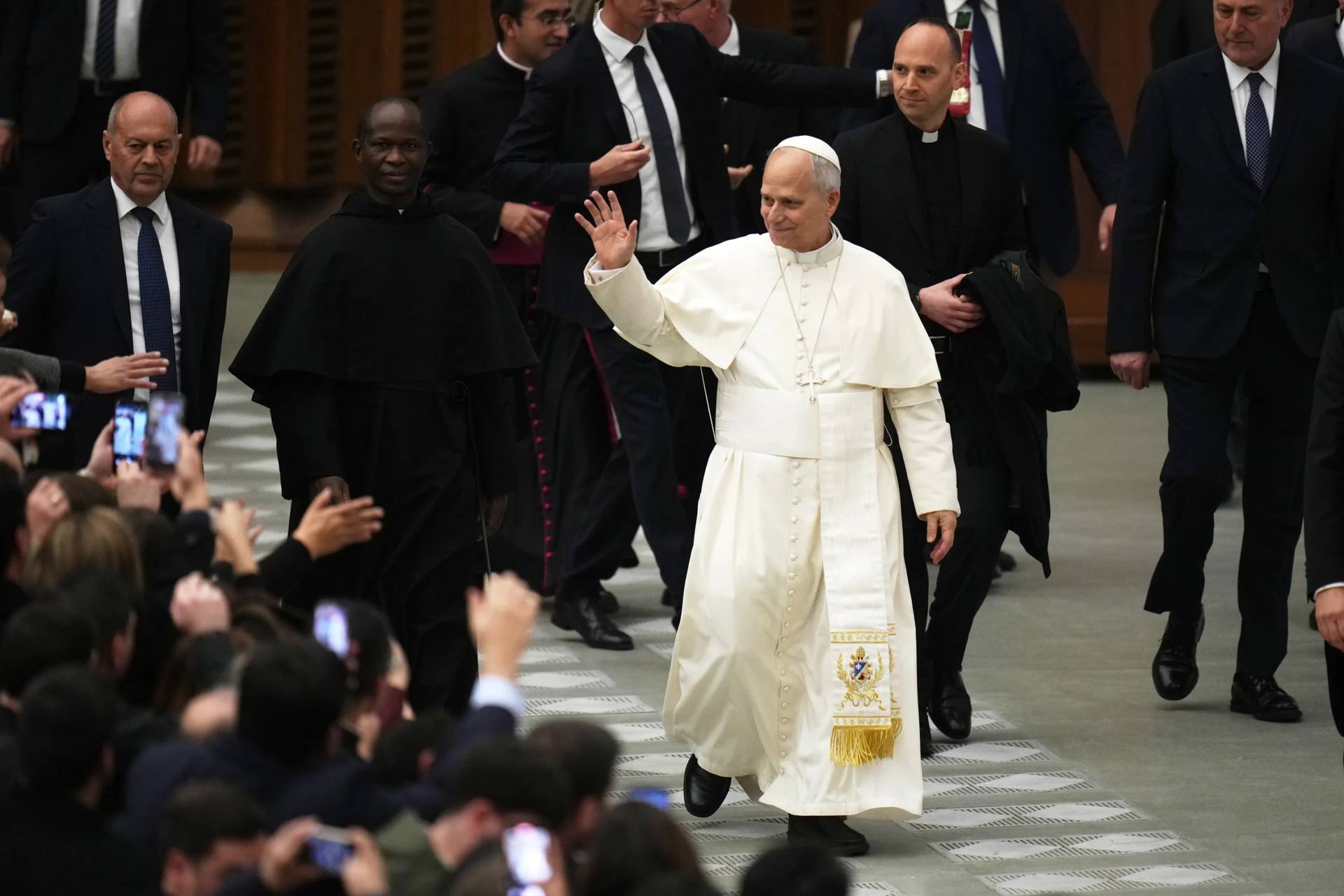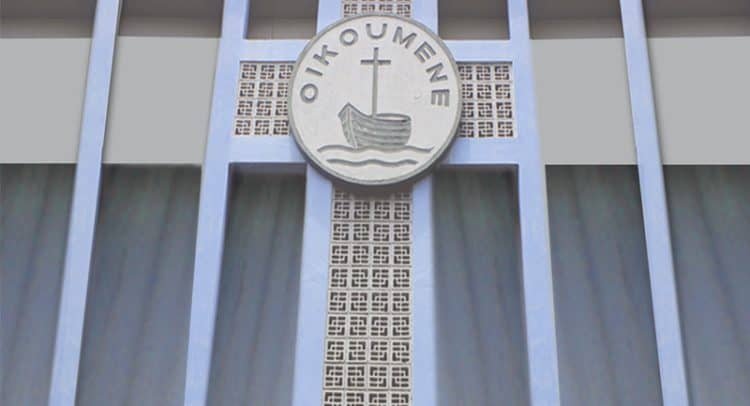ROME – Pope Francis has inaugurated a “Year of Prayer” in the lead-up to the Jubilee of Hope in 2025, with aides outlining the Vatican’s vision for how believers ought to better incorporate prayer into their daily lives.
During his Jan. 21 Sunday Angelus address, Pope Francis officially opened a year of prayer leading up to the 2025 celebration, saying, “The next few months will lead us to the opening of the Holy Door, with which we will begin the jubilee.”
“I ask you to intensify your prayer to prepare yourselves to live well this event of grace and to experience the strength of hope in God,” he said, saying the Year of Prayer is dedicated to “rediscovering the great value and absolute need of prayer in personal life, in the life of the Church, and of the world.”
Speaking to journalists at a Jan. 23 press conference, Italian Archbishop Rino Fisichella noted that the pope in his February 2022 letter announcing the theme of the 2025 jubilee, “Pilgrims of Hope,” said he wanted 2024 to be a “symphony of prayer” in preparation for the jubilee.
For this reason, Fisichella said the year 2024 would be “one of preparation for the Jubilee which is about to begin and a year during which the spiritual significance of the Jubilee must emerge more clearly, something which goes far beyond the necessary and urgent forms of structural organization.”
To this end, he outlined the steps taken thus far to organize the jubilee and said that rather than a time for holding specific initiatives, 2024 is “a privileged time in which to rediscover the value of prayer, the need for daily prayer in the Christian life.”
It is a time, he said, “to discover how to pray, and above all how to educate the people of today in prayer, in this age of digital culture, so that prayer can be effective and fruitful.”
Though the Vatican is not organizing any major event, Fisichella, who is Pro-Prefect of the Vatican Dicastery for Evangelization and who in that role is in charge of organizing the 2025 jubilee, said his department will be publishing various materials on prayer to serve as pastoral aides for this year.
One concrete initiative that will take place, he said, is that Pope Francis in 2024 will set up a “School of Prayer” that will consist of a series of meetings and encounters with different groups of people, with the aim being “to pray together and better understand the various forms of prayer.”
Fisichella highlighted several traditional forms of Christian prayer, ranging “from thanksgiving to intercession; from contemplative prayer to the prayer of consolation; from adoration to supplication,” and so on.
When these meetings happen depends on the pope’s schedule, but they will be similar to the pope’s “Fridays of Mercy” during the 2015 extraordinary Jubilee of Mercy, when the pontiff every Friday afternoon would make a different charitable outing, he said.
Places Pope Francis visited during his Fridays of Mercy included rehab centers for drug and alcohol addicts, organizations that assist former prostitutes, and centers for the disabled. He also held meetings with different groups of people, including one encounter with former priests who now have families.
“Let’s not forget that the pope is the Bishop of Rome,” Fisichella said, saying the pope is expected to meet families and other groups, such as parish groups or groups receiving catechesis.
Fisichella said his dicastery would provide more information on the various “school of prayer” initiatives that Pope Francis will perform whenever the details are defined.
Beyond the “School of Prayer” events, Fisichella said the emphasis for 2024 is on rediscovering the value of prayer and fostering prayer at the individual level, from making the sign of the cross, to attending daily Mass, to praying the rosary, to spontaneous prayer from the heart.
“Prayer cannot be captured in a preestablished pattern because it is a manifestation of the believer’s personal relationship with God himself within that intimate and exclusive relationship that distinguishes our faith,” he said.
The Year of Prayer, then, can help believers strengthen their relationship with God, “offering moments of genuine spiritual rest,” he said, likening it to “an oasis sheltered from daily stress where prayer becomes nourishment for the Christian life of faith, hope and charity.”
Among the various pastoral materials and aids the Vatican will publish this year is a series of short volumes on different aspects of prayer written by prominent authors and churchmen.
The first volume, authored by Italian Cardinal Angelo Comastri, former archpriest of Saint Peter’s Basilica, and titled, “Praying today: A challenge to overcome,” was published Tuesday and includes a preface from Pope Francis.
Other volumes that will be published include: “Praying with the psalms” by Italian Cardinal Gianfranco Ravasi; “The prayer of Jesus” by Juan López Vergara; “Praying with saints and sinners” by Father Paul Murray; “The parables of prayer” by Antonio Pitta; “The Church in prayer” by various Carthusian monks; “The prayer of Mary and the saints” by Catherine Aubin; and “The prayer that Jesus taught us: Our Father,” by Ugo Vanni.
According to Fisichella, the complete series will be published by April of this year, since the papal bull officially decreeing the 2025 Jubilee will be published on May 9, and from that moment, the bull will be the main source of reflection in the remaining time leading up to the inauguration of the jubilee.
Fisichella said other pastoral aids on prayer will explore the dynamic of prayer in community, in the family, in shrines, and prayer for priests, cloistered nuns, and young people, among others.
“In short, nothing extraordinary, not new prayers,” he said, but materials that will help “to live with greater awareness of the need for daily prayer.”
In terms of practical planning, Fisichella said some 623 people are directly involved at various levels of the planning process, not only at the Vatican, but also at the national and local levels.
Organizers have held over 200 meetings so far, with each of the six working groups continuing to iron out details as more events are planned and requests come in from various dioceses organizing pilgrimages.
While a general calendar of major events has already been published, containing over 300 initiatives, Fisichella said there will be more, smaller-scale events happening almost daily, and that the Vatican is in regular contact with Italian dioceses and bishops’ conferences from around the world about planning for pilgrim groups.
Commissions were also formed to define the logo and the official hymn, and meetings have been held with the heads of the four papal basilicas to discuss how to facilitate pilgrim groups and address any issues that might come up.
Monthly meetings are also being held with representatives of the city of Rome, including Mayor Roberto Gualtieri, to discuss the progress of construction projects underway near the Vatican and those that have yet to begin in preparation for the jubilee.
Last year, Italian officials announced ambitious plans to spend roughly 1.8 billion Euro, or $1.95 billion, on nearly 100 different projects to update and enhance the city of Rome prior to the 2025 jubilee.
RELATED: Italy unveils ambitious spending plan of nearly $2 billion for 2025 Jubilee
These ambitious construction projects have clogged streets, disrupted traffic flow, and limited access to restaurants and bars, causing a headache for locals. The same thing happened prior to the ordinary jubilee of 2000, and now as then, disgruntled Romans have lamented the disruption these projects have caused to their daily lives and routines.
Fisichella acknowledged the “suffering and fatigue” of many locals at the ongoing construction projects and asked for patience.
Noting that he himself has lived in Rome for 23 years and knows well the hassles of traffic, Fisichella said the projects underway are intended to better the city, and pointed to several projects that were completed for the 2000 jubilee, including new parking garages, underpasses, and express bus routes.
He asked Romans to have “some historic memory,” saying, “even in the previous jubilee, significant works were organized that we can enjoy.”
“We still ask for a bit of patience so that the works that are being done will make the city more beautiful and more functional,” he said.
Currently some 32 million people are projected to visit Rome for the 2025 jubilee, based in part on tourism and the attendance of past jubilees. Roughly 25 million pilgrims came for the Great Jubilee in 2000, and around 21 million people came for the extraordinary jubilee in 2015.
Fisichella said the estimate of 32 million for 2025 is the result of a scientific analysis provided by the sociology department of a civil, state-run university in Rome that he contacted asking for a study with projections when planning for the jubilee first began.
He did not name the university but cautioned that the numbers are only a rough estimate, and that while the final tally can’t be established with exactness, “it will be a number that can correspond to what the scholars of the faculty gave.”
To this end, he pointed to the special jubilee for young people event slated to take place during the Jubilee of Hope, saying 1.5 million youth have already signed up. More could still come, and there are other jubilee events for different groups scheduled almost every weekend of the year for 2025.
In terms of construction projects near the Vatican in the lead-up to the jubilee, Fisichella said some have already begun and some have not yet, but all of them are still expected to be finished by early December, just before the inauguration of the jubilee on Dec. 24.
There will also be a series of cultural events held throughout the jubilee, Fisichella said, saying his department is organizing eight concerts and 10 different exhibitions throughout 2024 and 2025 as a “privileged way to evangelize” during the jubilee.
Follow Elise Ann Allen on Twitter: @eliseannallen














